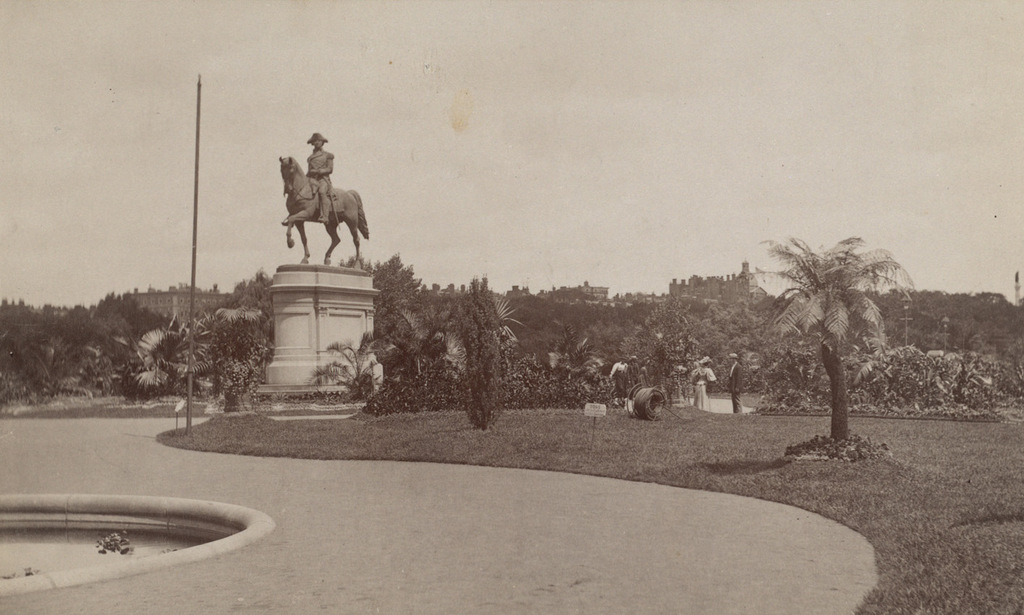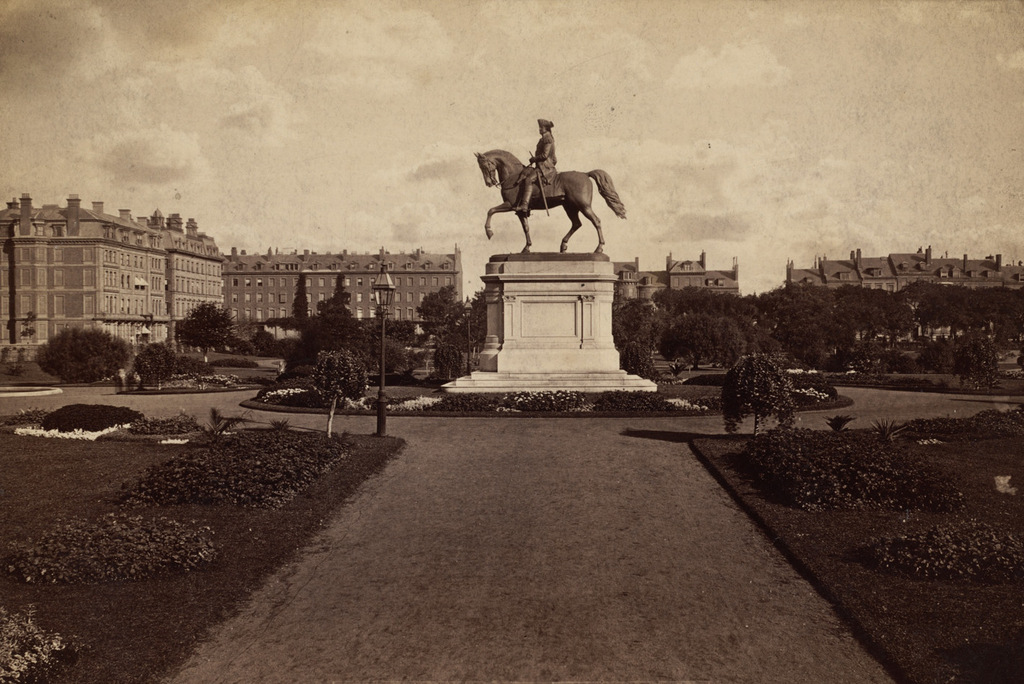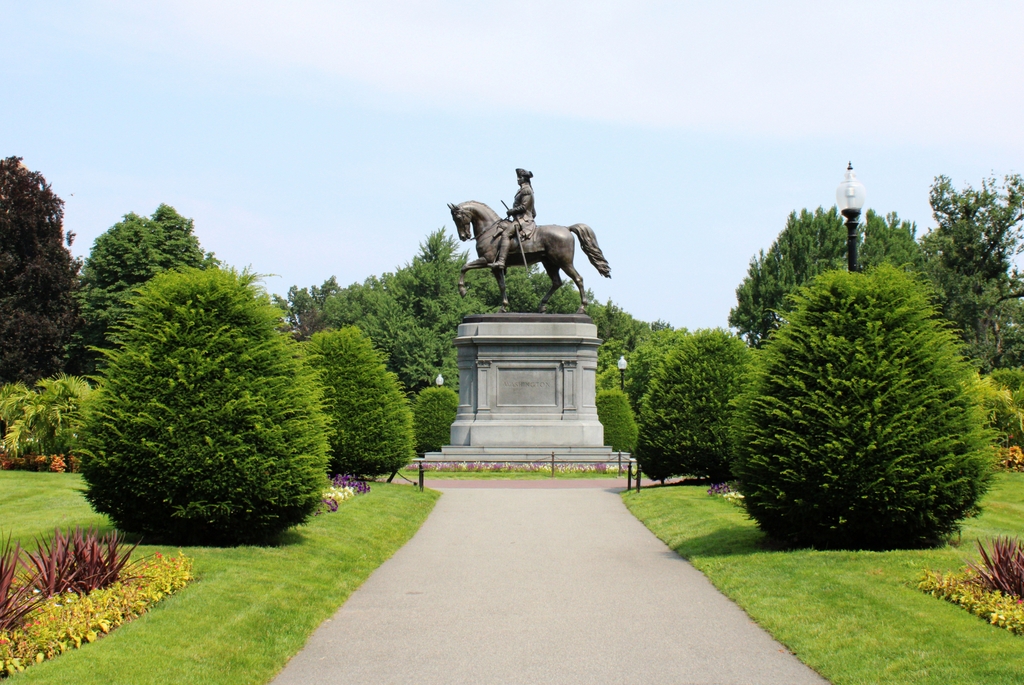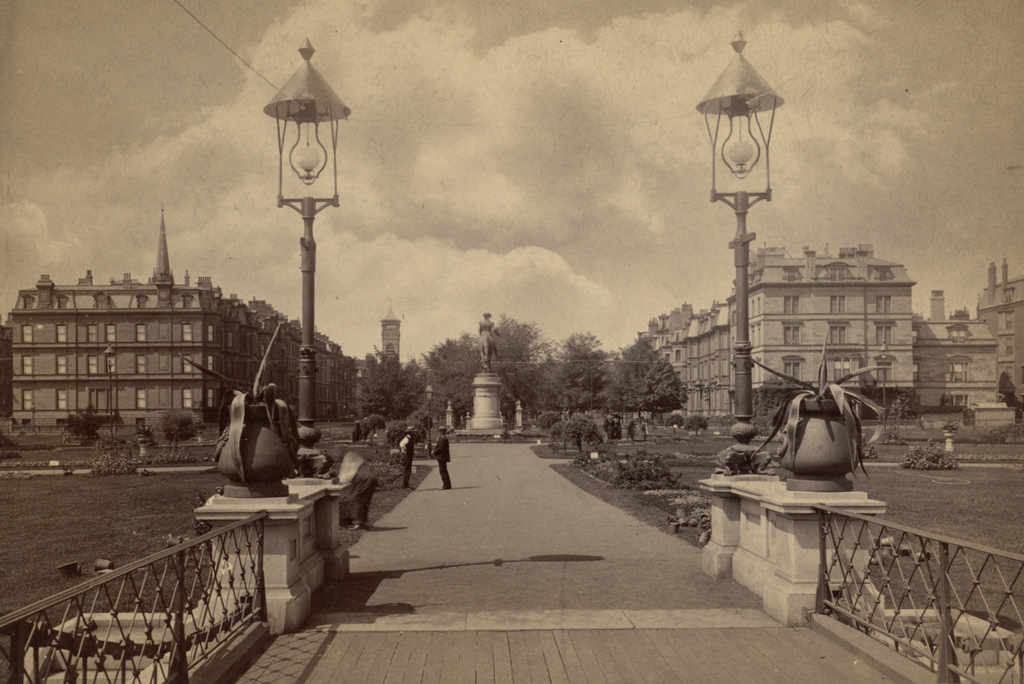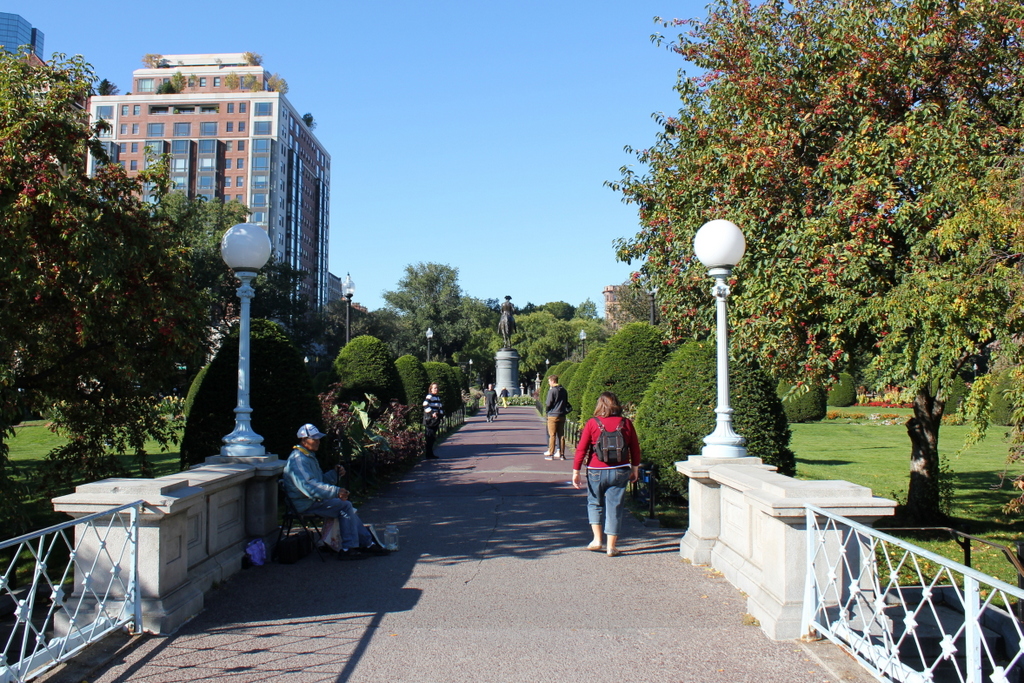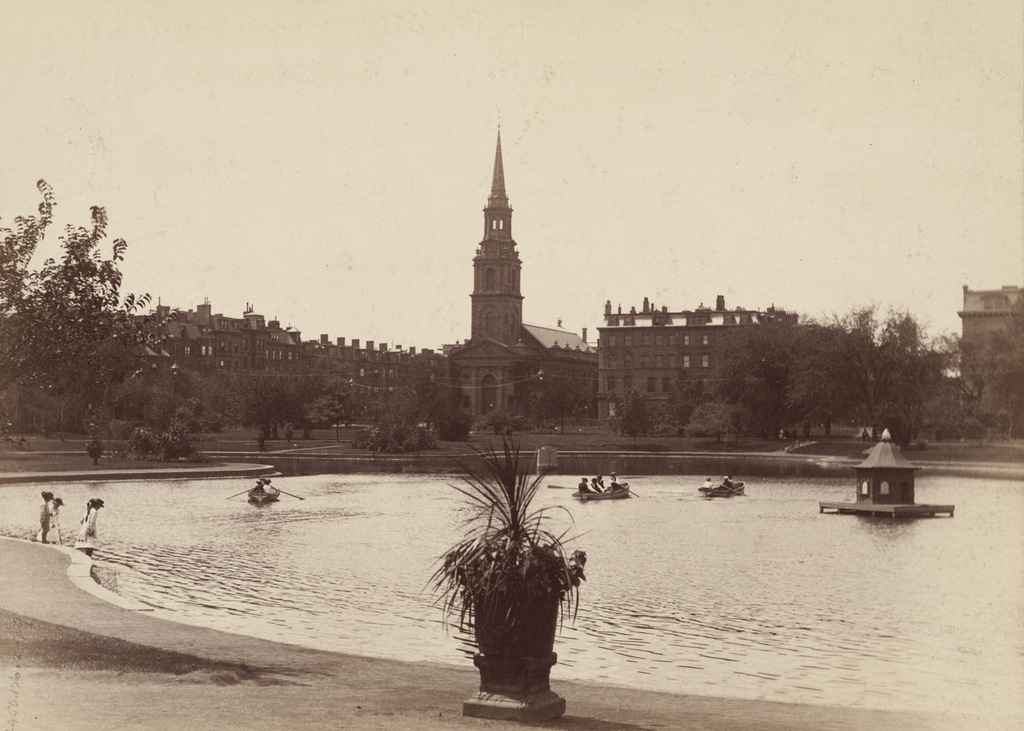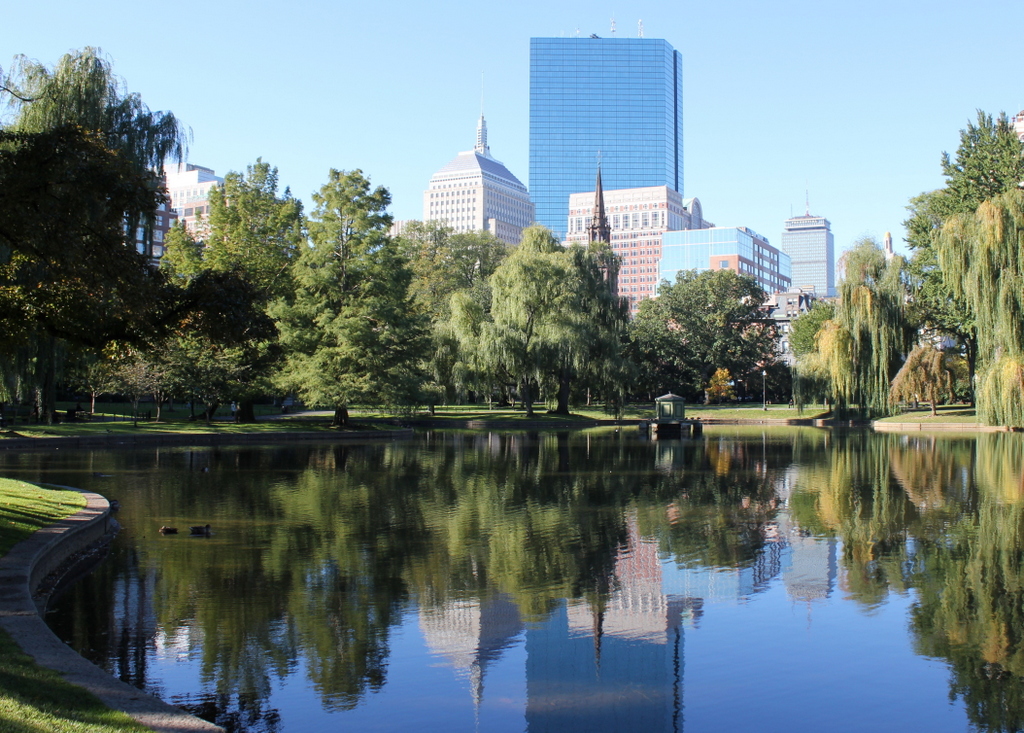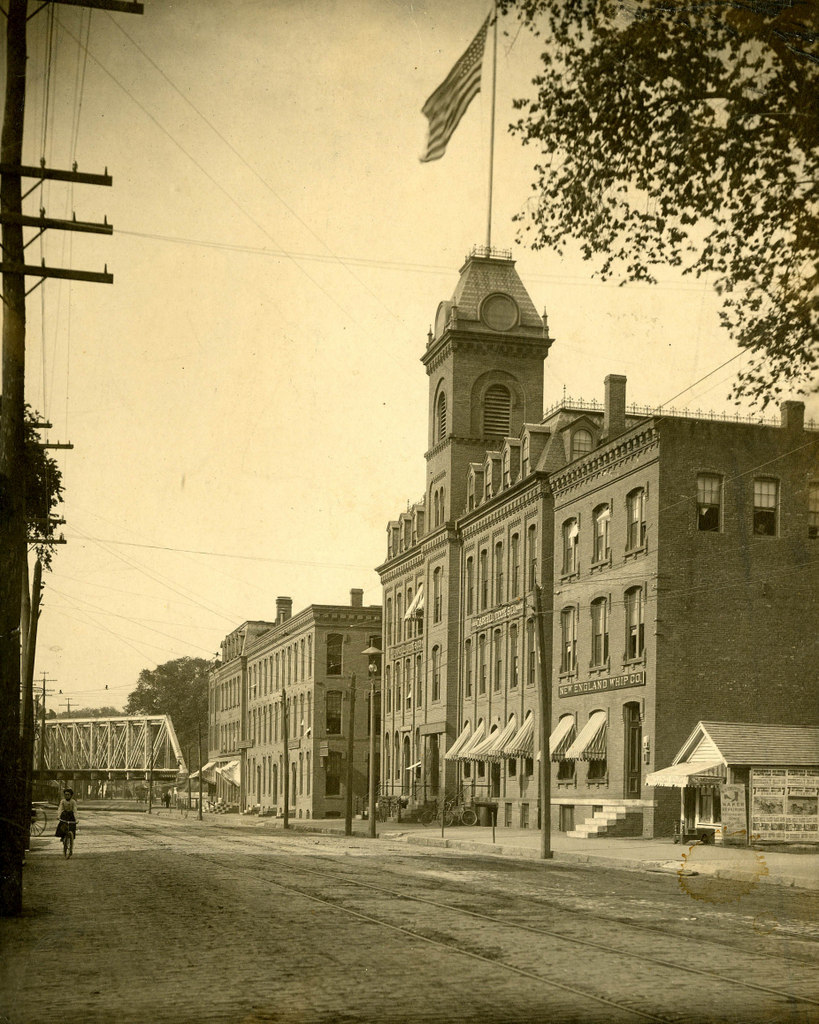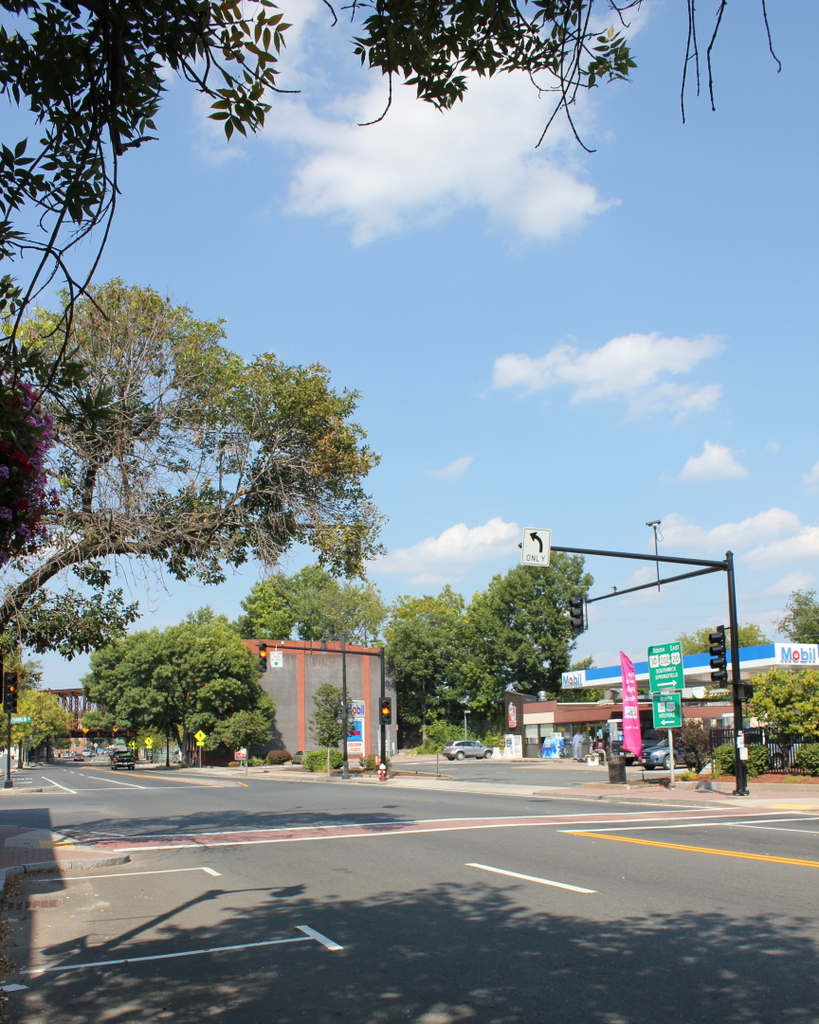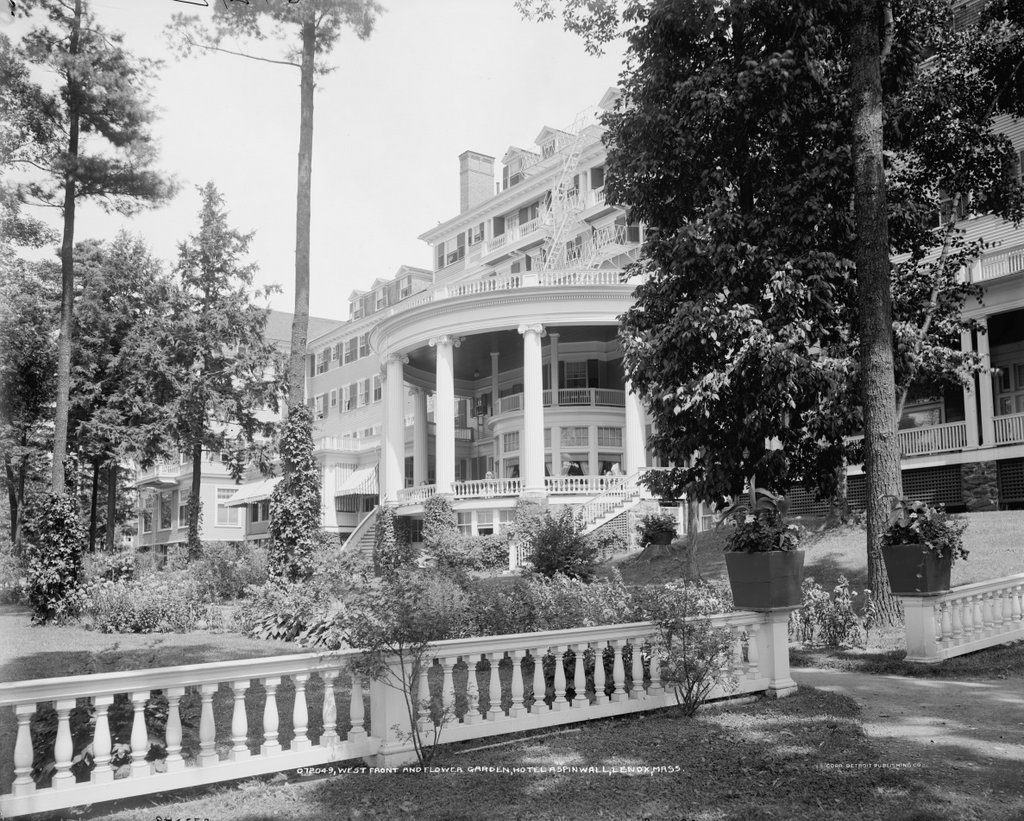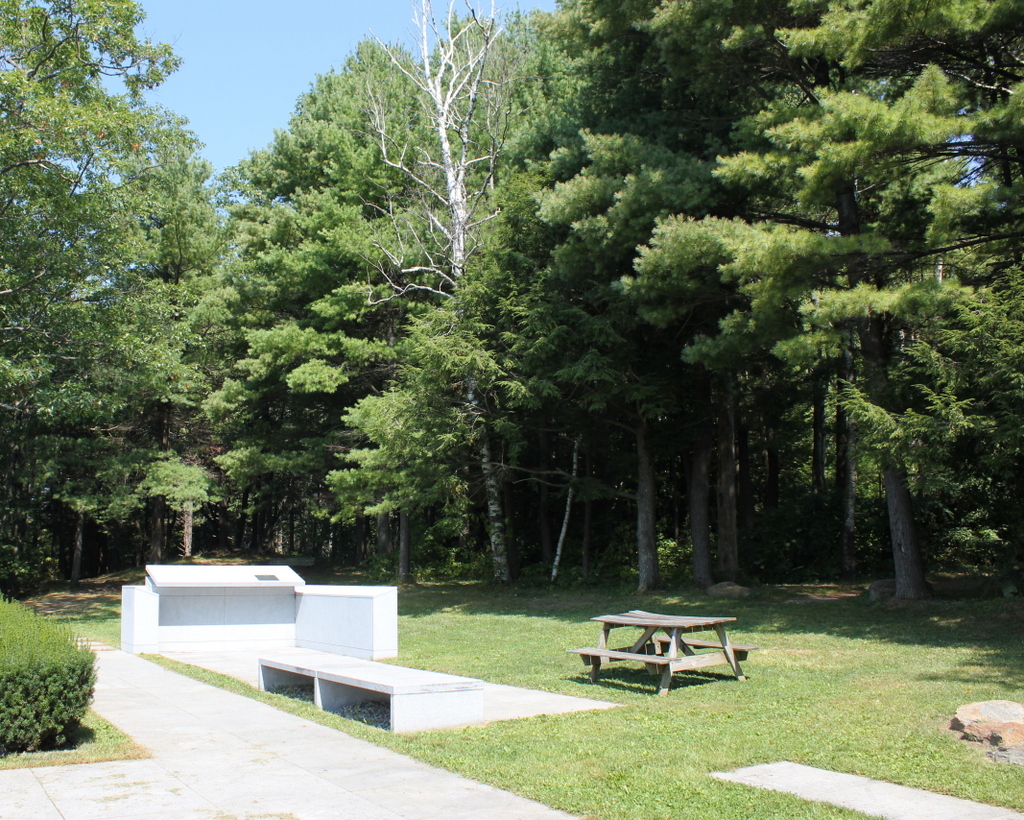The view of the Boston Public Garden, looking northeast from just inside the entrance at Commonwealth Avenue, taken around 1900. Image courtesy of the Boston Public Library.
The scene in 2015:

This statue of George Washington has appeared in several earlier posts here and here, and the scene shows the statue with Beacon Hill in the distance. The only easily recognizable building from the first photo is the Massachusetts State House; the distinctive dome and triangular pediment beneath it can be seen just to the left of the palm tree on the right side of the first photo. The State House is still there, but its view is now blocked by larger trees in the park. Incidentally, if the palm trees in the first photo look out of place in Boston, it’s because they are. Although they are not native to anywhere near New England, tropical plants such as pal trees and the elephant ear plants in the 2015 scene have long been a summer feature at the Public Garden, and in the winter they are stored in greenhouses to protect them from the cold.

